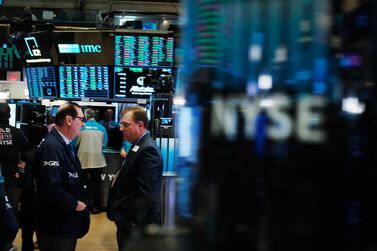Emerging markets have a “secular stagnation problem”, says the Institute of International Finance (IIF). GDP growth across 34 economies, apart from China and India, has failed to “meaningfully outperform that in developed markets since 2013”, according to a note from the Washington-based organisation.
China and India have been able to sustain growth due to their large populations and economic size. Otherwise, growth has slowed and on average is in line with developed markets.
“Growth across emerging markets has slowed sharply in recent years, driven by weak investment,” the IIF said.
Year-on-year growth in the third quarter of 2019 was below the developed market average in Brazil, Uruguay, Turkey, South Africa, Ecuador, Mexico, Saudi Arabia and Argentina, figures from the IIF and Haver Analytics show.
This has “important implications for markets, because the underlying value proposition of EM is predicated on higher growth, which in turn should translate into higher returns on foreign investment”, the IIF said.
Global economic growth is expected to increase slightly to 2.5 per cent this year from 2.4 per cent in 2019, but downside risks such as US-China trade tensions persist, the World Bank said in a report on Thursday.
Growth in emerging market and developing economies is expected to accelerate this year to 4.1 per cent from 3.5 per cent last year, the World Bank said. However, about a third of these economies are projected to decelerate due to weaker-than-expected exports and investment.
The IIF note said possible threats to potential growth for emerging markets in the coming decades include increased automation, climate change and deglobalisation.
There have been two polar-opposite responses to slow growth among emerging markets. One response, taken by Turkey and Argentina, is greater policy activism. “Unfortunately, this approach has failed to avert the trend slowing in growth and merely resulted in a series of boom-bust cycles,” the IIF said.
The other response, taken by Mexico and South Africa, is for central banks to pursue highly orthodox monetary policies by building a risk-premium into interest rates. In these cases, the result has been growth that has slowed to nearly zero.
A separate paper published by London-based research consultancy Capital Economics on Friday said that while growth in emerging economies will continue to outpace that in the developed world, this will not be to the extent seen in the past two decades.
"The process of reform and market liberalisation has stalled in many large EMs and some of the previous gains from opening up to international trade could be lost as the current wave of globalisation ends," it said in its Long-Term Economic Outlook.
There are no major emerging markets left to integrate into the global economy. Meanwhile, “smaller ones, such as those in Africa, lack the institutions and desire” to make the necessary reforms, Capital Economics said. As globalisation has peaked, international trade of goods and services has flattened off as a share of GDP.
The economies of “emerging Asia” are likely to be hit the hardest. India is the exception, with 6.7 per cent growth in 2016-2020 and 6.9 per cent growth forecast in 2021-2025.
The GCC may struggle with diversification beyond oil, though the UAE is “better placed to cope with lower real oil prices”, the report said. The Emirates experienced 1.9 per cent economic expansion in 2016-2020 but 2.5 per cent growth is forecast for 2021-2025.
Looking far ahead, at the world in 2050, Capital Economics said emerging markets will account for almost 60 per cent of the world economy, compared to 44 per cent now.
India’s share of global GDP will increase to 10 per cent in 2050 compared to 3 per cent last year, but China's share will remain below that of the US, Capital Economics predicts. By 2050, the US will have a 22 per cent share of global GDP and China will have 18 per cent, compared to 24 per cent and 16 per cent in 2018, respectively.








